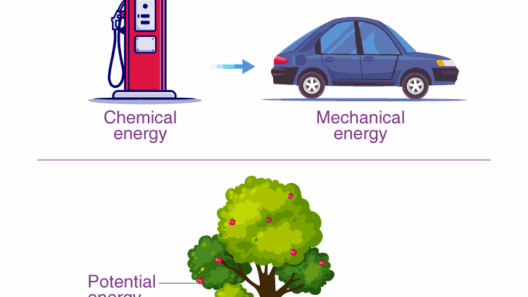Lenz’s Law serves as a remarkable testament to the intricate dance between energy and magnetism, illustrating the profound principle of conservation of energy. This law posits that the direction of an induced electromotive force (emf) and the subsequent current will oppose the change that produced it. At its core, Lenz’s Law encapsulates the essence of resistance—both magnetic resistance and the universal desire for equilibrium within natural systems.
To unpack the significance of Lenz’s Law, consider it through the lens of a flowing river. As water cascades downstream, it inevitably encounters stones and uneven terrain that resist its course. Similarly, Lenz’s Law articulates how induced currents respond to changes in their magnetic environment. When a changing magnetic field permeates a conductor, it generates an electric current. However, this current engages in a defiant struggle; it flows in such a way as to create its own magnetic field, countering the original change. In this metaphorical river, the stones symbolize the resistance faced by the current, which serves to preserve the system’s equilibrium.
Magnets and conductors are the actors on this stage of resistance. When a powerful magnet is thrust towards a copper loop, an intriguing interplay unfolds. The changing magnetic field induces a flow of electrons, generating a current. In this instance, one might expect that the flow would continue unimpeded. However, like a vigilant guardian, the newly produced magnetic field from the induced current arises in opposition to the initial magnetic field, echoing Lenz’s sentiments of conservation.
To comprehend the mechanics underlying Lenz’s Law, one must delve deeper into the components involved. The law can be mathematically expressed through Faraday’s law of electromagnetic induction, where the induced emf (ε) is proportional to the rate of change of magnetic flux (Φ) through a closed loop. Mathematically, this relationship can be articulated as:
ε = -dΦ/dt
The negative sign in the equation embodies Lenz’s Law—it signifies that the induced emf acts in such a manner as to oppose the change in flux. This elegant relationship encapsulates the principle of conservation of energy; energy is neither created nor destroyed, merely transformed. Through this lens, one can observe how electric and magnetic fields eternally trade energy, choreographing a beautiful ballet of resistance and transformation.
The implications of Lenz’s Law transcend mere academic curiosity and extend into the realm of practical applications. Electric generators, transformers, and inductors owe their functionality to the principles articulated by Lenz. In an electric generator, mechanical energy is converted into electrical energy, and the interplay of Lenz’s Law becomes palpable. The resistance offered by the induced magnetic field must be surmounted to sustain the flow of current. Without this resistance, the process would culminate in an unending spiral of energy without purpose.
To understand the practical implications of Lenz’s Law, let’s analyze the operation of a typical generator. It converts kinetic energy from a rotating coil within a magnetic field into electrical energy. As the coil spins, its orientation with respect to the magnetic field alters, leading to a change in magnetic flux. According to Lenz’s Law, this induced current will strive to resist the very motion that created it, contributing to the overall efficiency and operational characteristics of the generator. The resistance is not merely a hindrance; it is a subtle calibration of energy use, encouraging systems to function optimally without waste.
This principle resonates profoundly within the context of renewable energy. In harnessing wind, solar, or hydroelectric power, Lenz’s Law underscores the importance of designing systems that can efficiently manage induced currents. Interruptions or fluctuations in power generation prompt electric systems to adapt, employing magnetic resistance as a stabilizing force. This is particularly crucial in the modern era of energy innovation as societies strive to reduce reliance on fossil fuels.
In a broader ecological context, Lenz’s Law reflects the universal tendency toward balance in nature. Ecosystems exhibit similar behaviors; any disruption to flora or fauna often invokes responses that seek to restore equilibrium. The lessons learned from this scientific principle echo through environmental discourse, reinforcing calls for sustainable practices. Lenz’s Law can serve as a metaphor for the delicate balance in ecological systems—any force that disturbs the natural order will be met with resistance, ensuring the magnitude of change is tempered by the surrounding environment.
In conclusion, Lenz’s Law elegantly underscores the conservation of energy principles, captivating our attention with its profound implications in both immediate applications and broader ecological narratives. The idea that induced currents resist changes in their magnetic environment not only reveals fundamental truths about electromagnetism but also provides valuable insights into energy management and environmental stewardship. As individuals and societies grapple with the complexities of energy consumption and production, Lenz’s Law serves as a steadfast reminder of the intrinsic balance that must be maintained. Like the flowing river, we must navigate the currents of change while recognizing the resistance necessary to achieve sustainability and harmony within our world.







